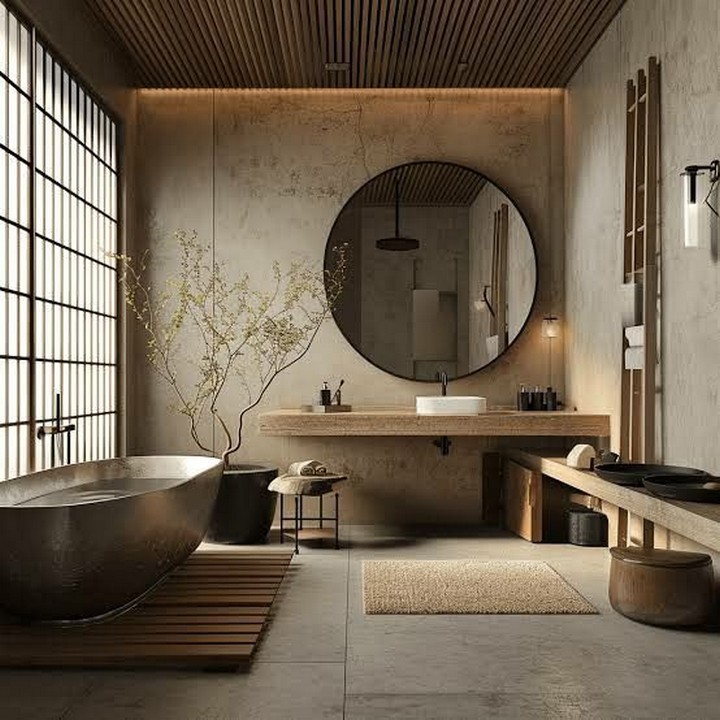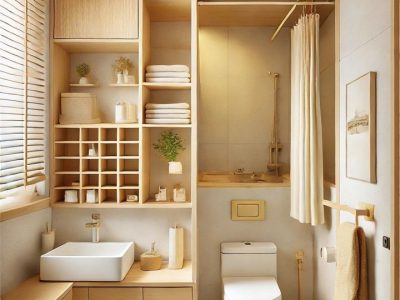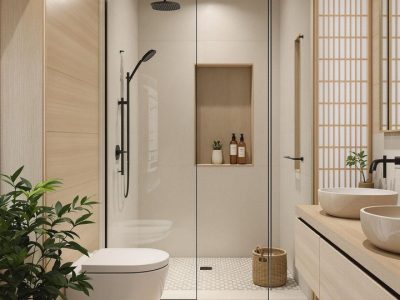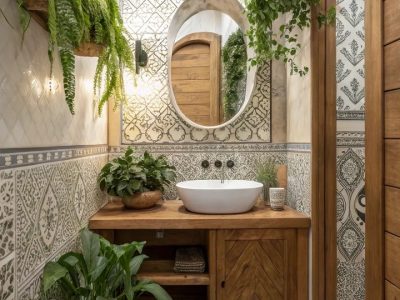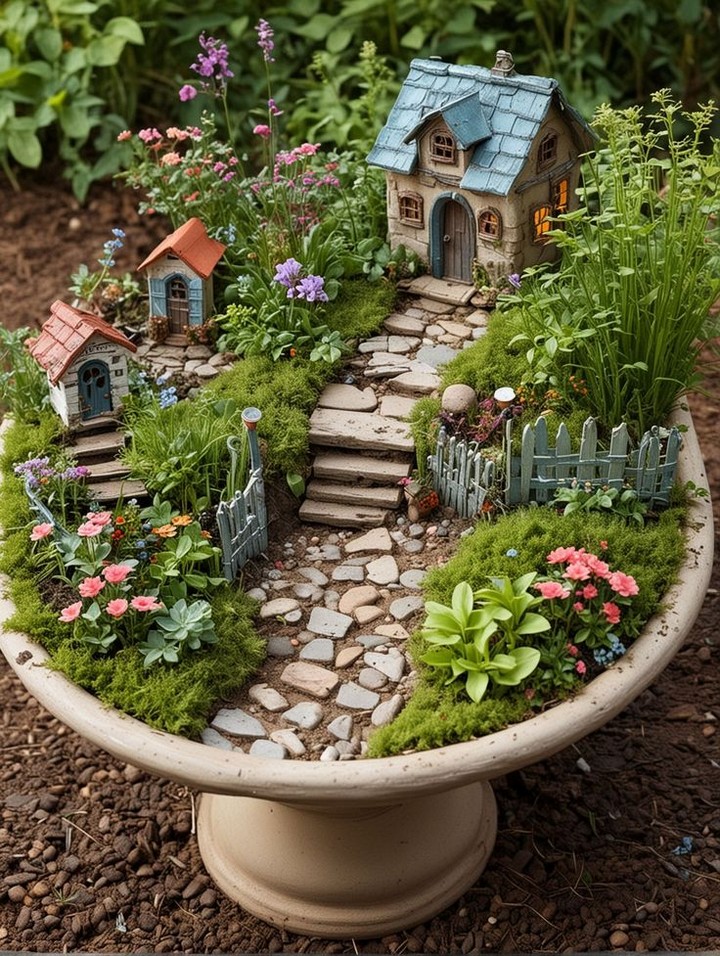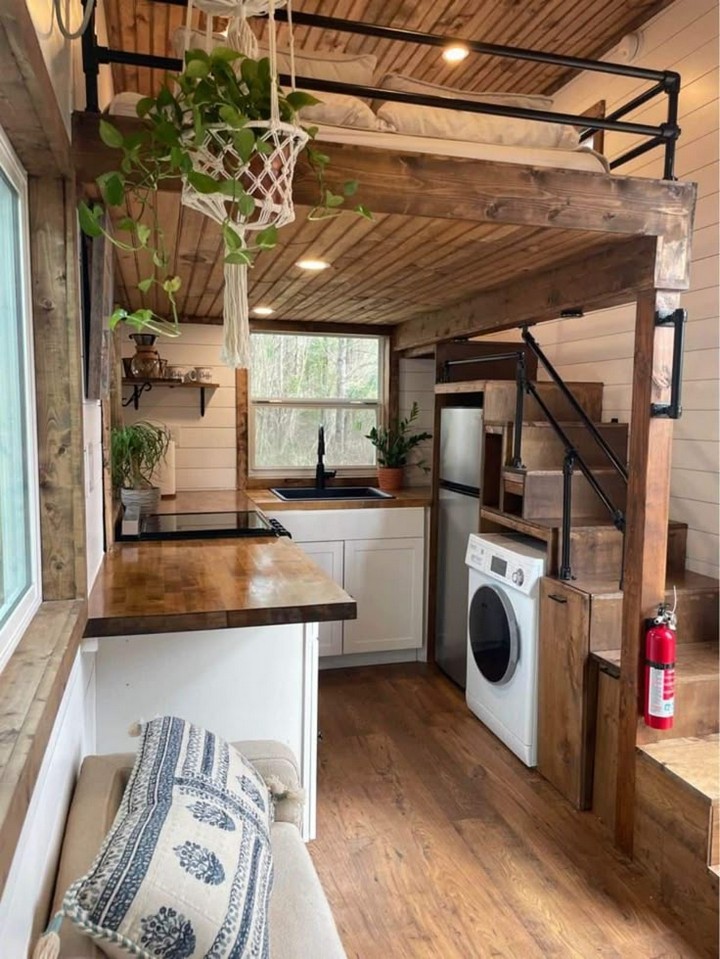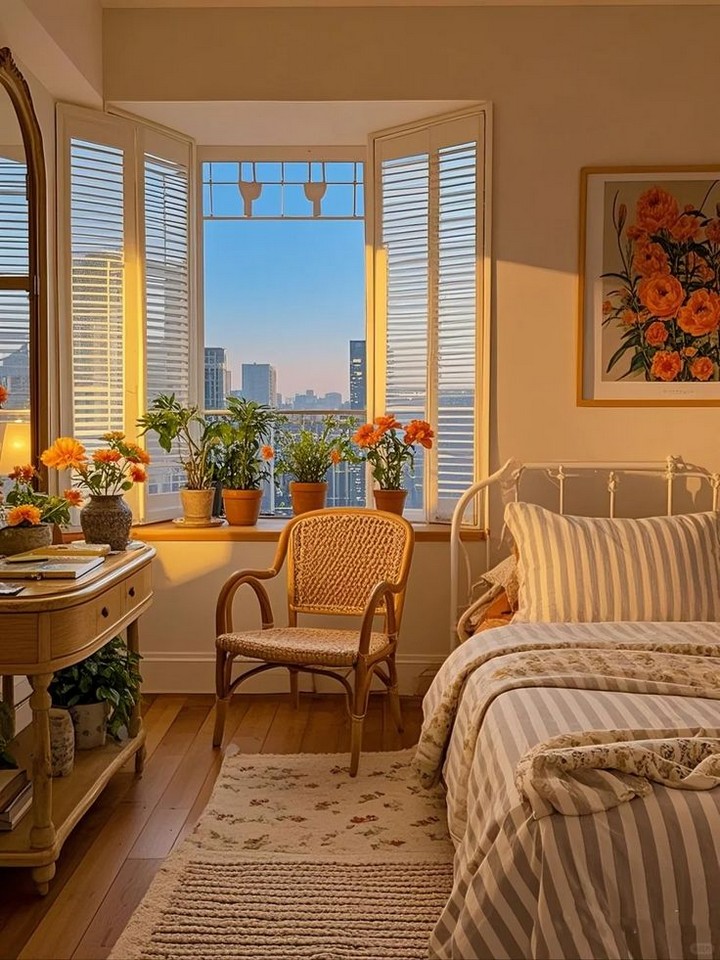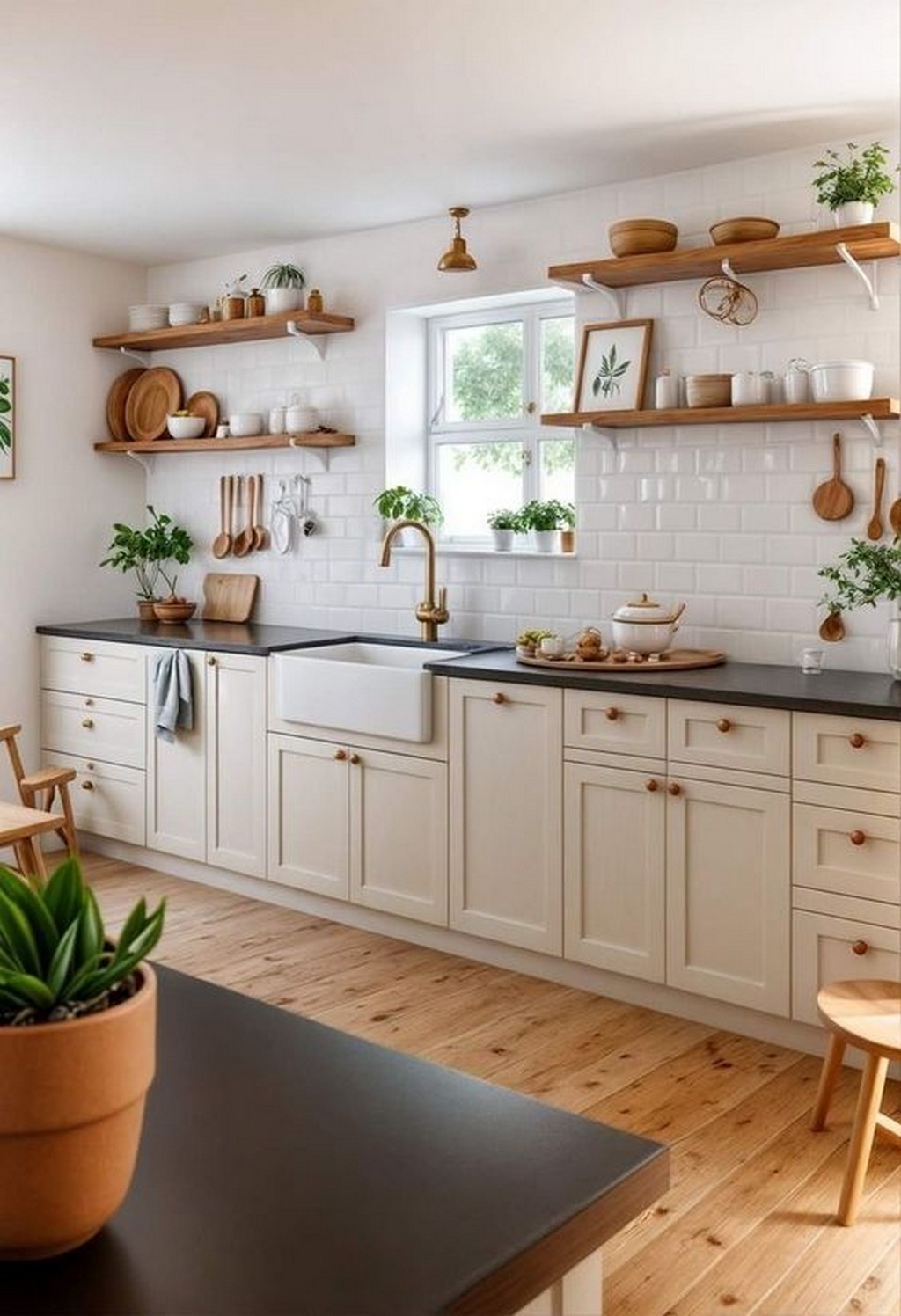Japanese bathroom design stands as a testament to how functionality and aesthetic beauty can harmoniously coexist. Unlike Western bathrooms that often prioritize efficiency and convenience above all else, Japanese bathrooms are conceived as sanctuaries spaces for both physical cleansing and mental rejuvenation.
The Japanese approach to bathroom design has evolved over centuries, deeply influenced by cultural practices, spiritual beliefs, and practical considerations. What emerges is a distinctive aesthetic that feels simultaneously ancient and contemporary, offering valuable inspiration for modern homeowners seeking to create more meaningful, restorative spaces.
In this comprehensive exploration, we’ll examine 28 beautiful elements of Japanese bathroom design that can transform an ordinary bathroom into an extraordinary retreat. From architectural features to material choices, from cultural traditions to practical innovations, these elements offer a fresh perspective on what a bathroom can be.
Traditional Foundations: Core Elements of Japanese Bathing Culture
1. Separation of Cleansing and Soaking
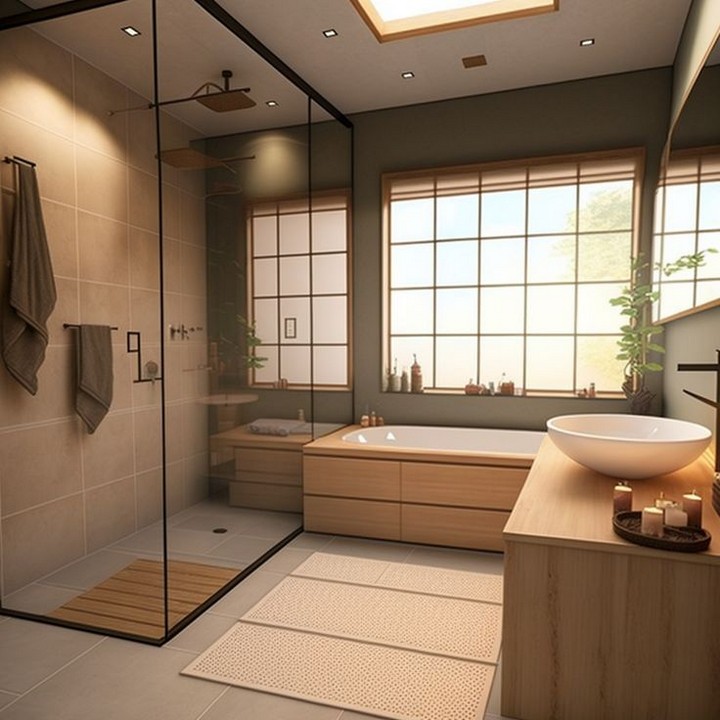
Perhaps the most fundamental concept in Japanese bathroom design is the clear distinction between cleaning the body and soaking in the bath. Unlike Western practices where we typically wash ourselves in the same tub we soak in, Japanese bathing culture separates these activities both physically and conceptually.
In traditional Japanese bathrooms, you’ll find a washing area with stools or benches where bathers thoroughly cleanse themselves before entering the soaking tub. This separation ensures the bathwater remains clean for everyone using it, allowing the tub to become a place of pure relaxation rather than utilitarian cleaning.
This principle manifests in contemporary designs through separate shower areas adjacent to soaking tubs, often with clear glass partitions or subtle level changes to define the spaces while maintaining visual continuity. Even in compact bathrooms, this conceptual and functional separation creates a more mindful bathing ritual.
2. Ofuro: The Deep Soaking Tub
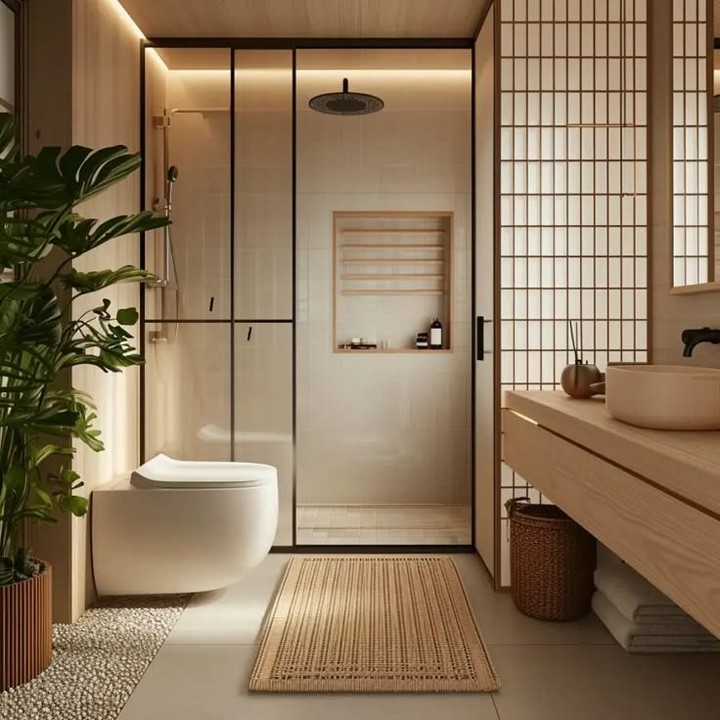
The ofuro a deep, compact soaking tub stands as the centerpiece of Japanese bathroom design. Unlike Western bathtubs designed for reclining, the traditional ofuro is deeper but shorter, allowing bathers to sit comfortably immersed to their shoulders with knees bent.
Traditional ofuro were crafted from hinoki cypress wood, prized for its antiseptic properties, subtle fragrance, and beautiful aging process. Modern interpretations range from wooden reproductions to contemporary materials like cast concrete, acrylic, or composite materials that reference traditional forms while offering practical benefits like improved insulation and easier maintenance.
The depth-over-length proportion makes ofuro particularly well-suited to smaller bathrooms, offering a luxurious soaking experience without requiring extensive floor space. For many, the ofuro represents the heart of Japanese bathroom design a place for contemplation, relaxation, and reconnection with oneself.
3. Wet Room Concept (Mizuya)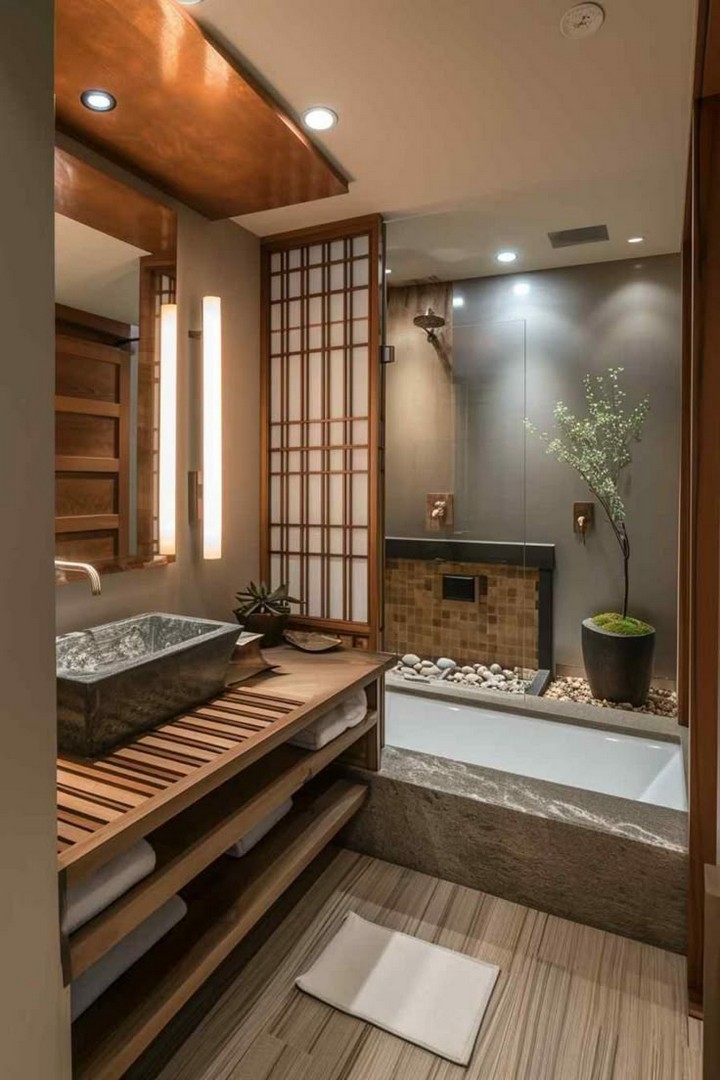
Rather than isolating bathing fixtures behind shower curtains or glass enclosures, traditional Japanese bathrooms embrace the “wet room” concept, where the entire space is designed to get wet. This approach, known as mizuya, creates a seamless, open feeling while eliminating the need for separate waterproofing zones.
Modern interpretations typically include floor drains throughout the space, slight floor slopes for proper drainage, and fully waterproofed surfaces from floor to ceiling. This integrated approach allows for more flexible use of space and easier cleaning, as the entire room can be rinsed down as needed.
The wet room concept feels particularly liberating in smaller bathrooms, where conventional Western fixtures and enclosures can create a cluttered, confined feeling. By embracing the Japanese approach, even compact spaces can feel open and breathable.
4. Wooden Bath Stools and Washing Bowls

The ritual of cleansing before entering the bath traditionally involves sitting on low wooden stools and using handled bowls (oke) to pour water over oneself. These humble tools elevate the washing routine into a mindful practice, creating moments of awareness and intention.
Contemporary Japanese bathrooms often maintain these elements, whether as functional items or decorative references. Modern interpretations might include beautifully crafted wooden stools and bowls made from water-resistant woods like hinoki or cedar, or updated versions in materials like bamboo composite or even stone that reference the traditional forms.
These elements serve as reminders of bathing’s ritualistic aspects while providing practical benefits the stools offering comfortable seating during washing and the bowls allowing controlled water usage in an age increasingly conscious of conservation.
5. Furo: The Bathing Room
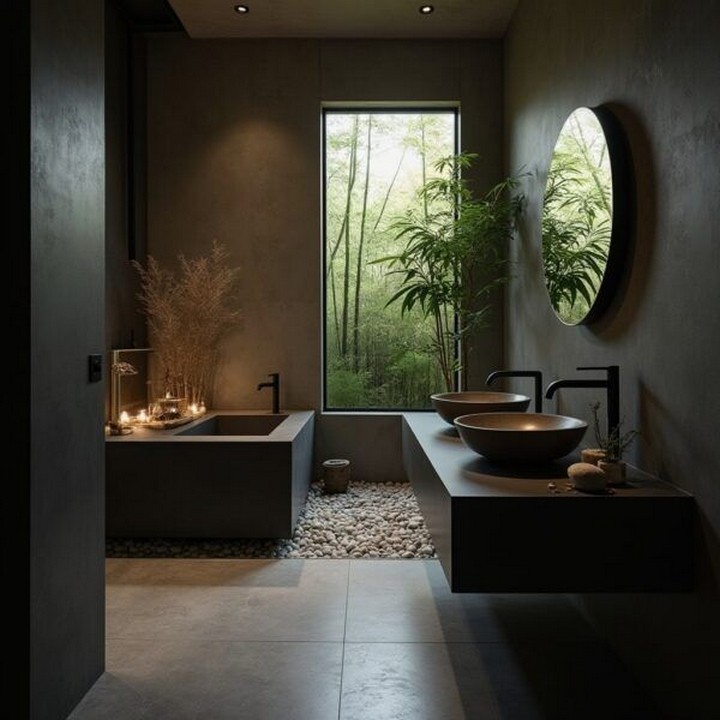
In traditional Japanese homes, the bathroom is conceptually divided into separate spaces the changing area (datsuijo), the washing area (araiba), and the bathing room (furo) containing the soaking tub. This differentiation creates a meaningful progression from the everyday world to the contemplative space of the bath.
In contemporary applications, this might manifest as subtle architectural distinctions rather than completely separate rooms perhaps level changes, material transitions, or partial walls that guide users through the bathing sequence without requiring extensive square footage.
This thoughtful zoning transforms the bathroom experience from a rushed, purely functional activity to a progressive journey that helps users transition mentally as well as physically an approach particularly valuable in our hurried modern world.
Aesthetic Elements: Creating Visual and Sensory Harmony
6. Natural Material Palette
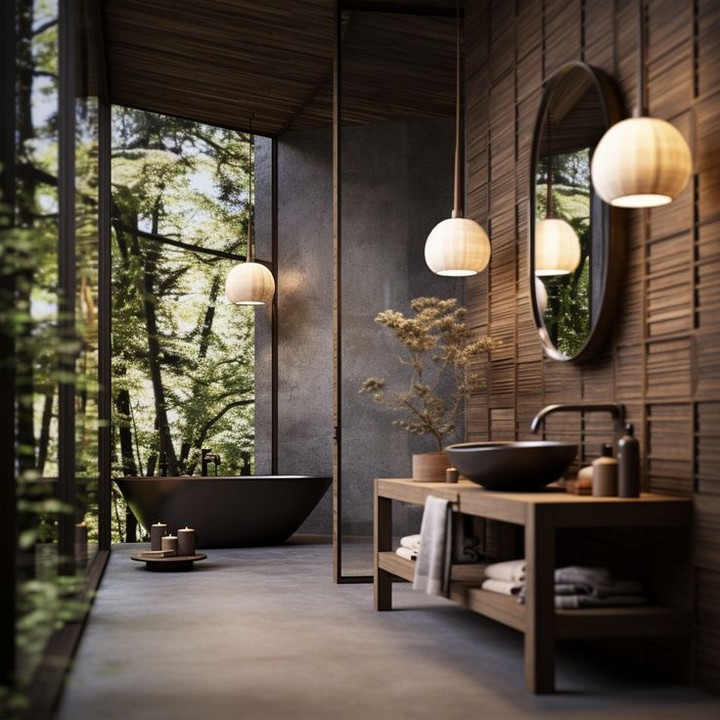
Japanese bathroom design has always privileged natural materials that engage multiple senses sight, touch, smell, and even sound. Traditional bathrooms feature unfinished woods, natural stone, bamboo, and clay in their authentic states, creating spaces that feel connected to the natural world.
In contemporary applications, this might include hinoki wood flooring or tub surrounds, unpolished granite or river stone surfaces, clay or porcelain tiles with organic textures, and accessories in materials like bamboo or rattan. These elements are typically left in their natural state or finished minimally to allow their inherent qualities to emerge.
This material authenticity creates bathrooms with subtle complexity and sensory richness despite their overall simplicity—spaces that reveal new details with each use and develop character as they age rather than deteriorating.
7. Neutral Color Palette with Selective Contrast
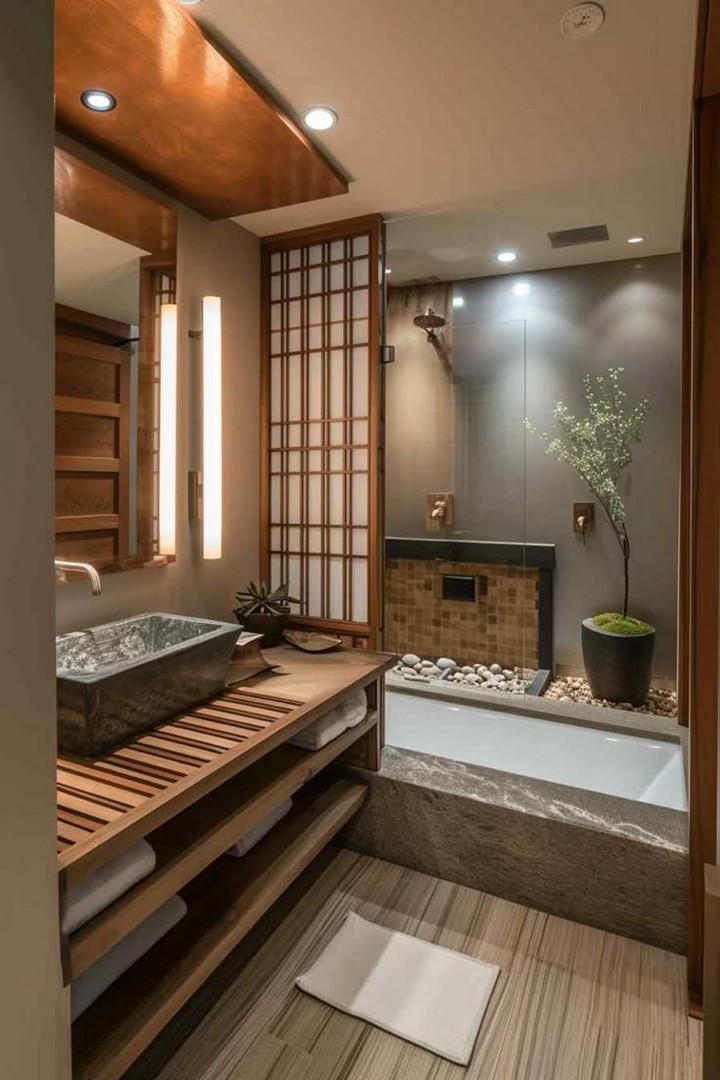
Traditional Japanese aesthetics favor restrained color palettes drawn from nature soft whites, warm beiges, gentle grays, and various wood tones dominate, occasionally accented with black elements for definition and focus. This approach creates serene environments free from visual noise.
In bathroom applications, this translates to spaces that feel cohesive and calming, where materials are selected as much for their inherent color as for their functional properties. The resulting harmony makes even small bathrooms feel spacious and uncluttered.
Contemporary interpretations sometimes introduce selective color accents perhaps a single blue tile referencing water, or a carefully placed green element suggesting bamboo but always with intention and restraint, maintaining the overall sense of tranquility.
8. Linear Drain Systems

Traditional Japanese bathrooms feature subtle floor slopes directing water to drainage points, often concealed beneath wooden duckboards or stone elements. Modern Japanese design has refined this concept with elegant linear drains that create clean, minimalist floors without the central drain typical in Western bathrooms.
These slim-profile drainage channels, often positioned along wall edges or thresholds, allow for simpler floor designs and uninterrupted surface materials. The visual continuity creates more spacious-feeling bathrooms while the improved drainage functionality enhances safety and cleanliness.
In contemporary applications, these might appear as almost-invisible slots along floor edges, discrete linear grates in matching materials, or intentional features integrated into the overall design practical elements elevated to aesthetic consideration.
9. Asymmetrical Balance (Fukinsei)
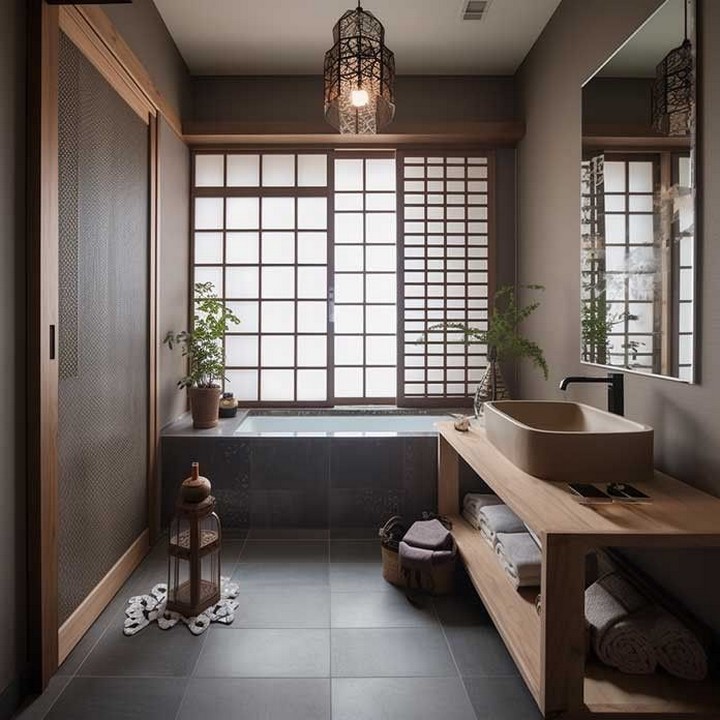
Unlike Western design traditions that often emphasize perfect symmetry, Japanese aesthetics embrace asymmetrical balance a principle known as fukinsei. This approach creates spaces that feel both dynamic and harmonious, engaging the viewer’s perception more actively than rigid symmetry.
In bathroom design, this might manifest as intentionally offset fixtures, carefully composed arrangements of differently sized elements, or thoughtful placement of a single distinctive feature that anchors the overall composition. The resulting spaces feel naturally balanced rather than artificially ordered.
This principle proves particularly valuable in bathroom renovations where existing architectural constraints might prevent perfect symmetry—Japanese design principles offer ways to create visual harmony even with irregular spaces or offset features.
10. Minimalist Fixtures and Hardware

Japanese bathroom design typically features fixtures and hardware that prioritize function while minimizing visual distraction. Unlike decorative Western approaches, Japanese fixtures tend toward simple forms, integrated designs, and unobtrusive mounting systems.
In contemporary applications, this translates to wall-mounted faucets with clean lines, integrated sink basins, concealed shower controls, and minimal hardware throughout. When hardware is visible, it often appears in natural metal finishes that will patina beautifully over time rather than maintaining an artificial sheen.
This restrained approach creates bathrooms where the essential elements water, space, material remain the focus rather than ornate fixtures or technical features, resulting in environments that feel both contemporary and timeless.
11. Subtle Texture Variations
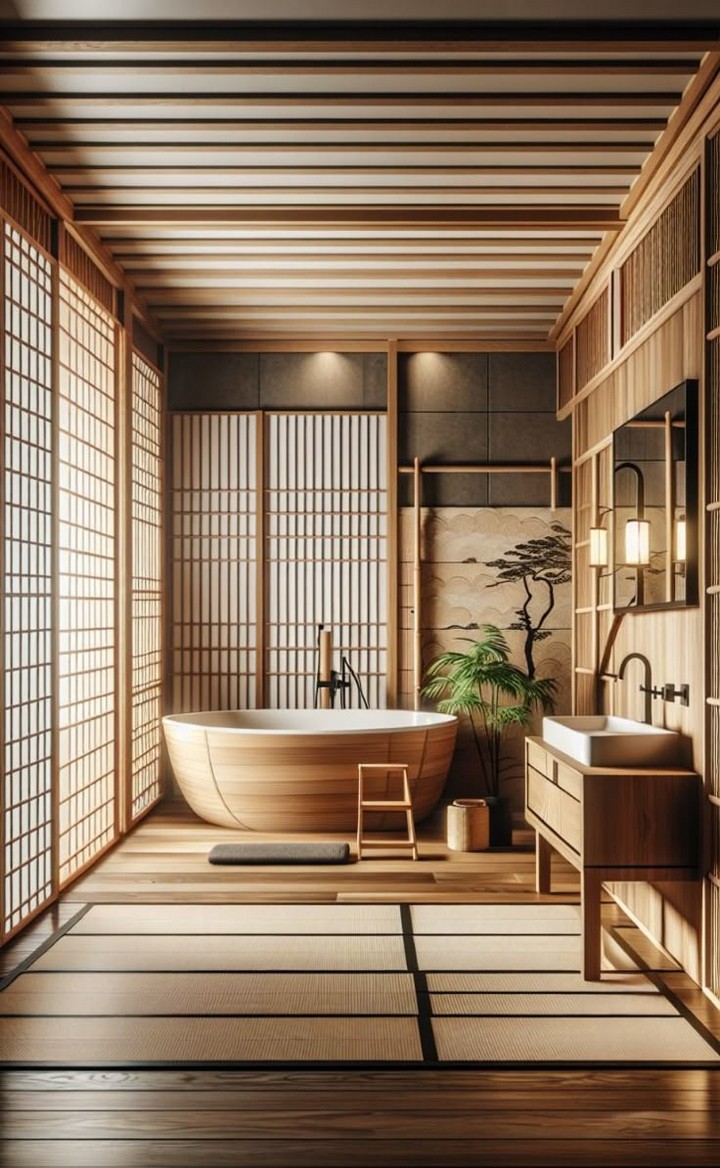
While minimalist in many ways, Japanese bathroom design is never flat or lifeless thanks to thoughtful incorporation of textural variety. Different surface treatments—from smooth polished stone to rough-hewn timber, from woven elements to varied tile textures create visual and tactile interest without requiring color variation or pattern.
Modern interpretations might include textured porcelain tiles that reference natural stone, slat walls with varied spacing, or custom concrete elements with intentional aggregate exposure. These subtle variations create spaces with depth and character despite restricted color palettes.
This textural richness proves particularly valuable in smaller bathrooms where elaborate decorative elements might overwhelm the space texture provides interest and warmth while maintaining visual simplicity.
12. Shoji-Inspired Light Control
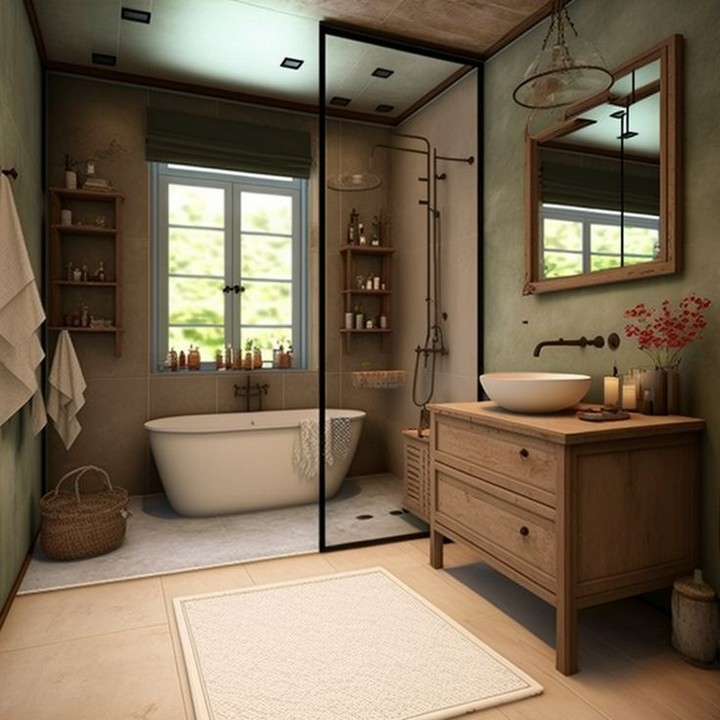
Traditional Japanese architecture uses shoji screens translucent paper panels in wooden frames—to create spaces with diffused, gentle light. Contemporary Japanese bathrooms often reference this tradition with modern materials that serve the same purpose: bringing natural light into the space while maintaining privacy.
These might include frosted glass panels, translucent resin screens, water-resistant fabric diffusers, or specialized window films that reference traditional paper patterns. Unlike conventional bathroom windows that are either completely clear or completely blocked, these intermediate solutions create beautiful, soft illumination throughout the day.
The resulting light quality transforms bathroom experiences, creating gentle transitions between interior and exterior, allowing connection to natural rhythms without sacrificing privacy or comfort.
Architectural Features: Defining Space with Intention
13. Engawa-Inspired Transitions
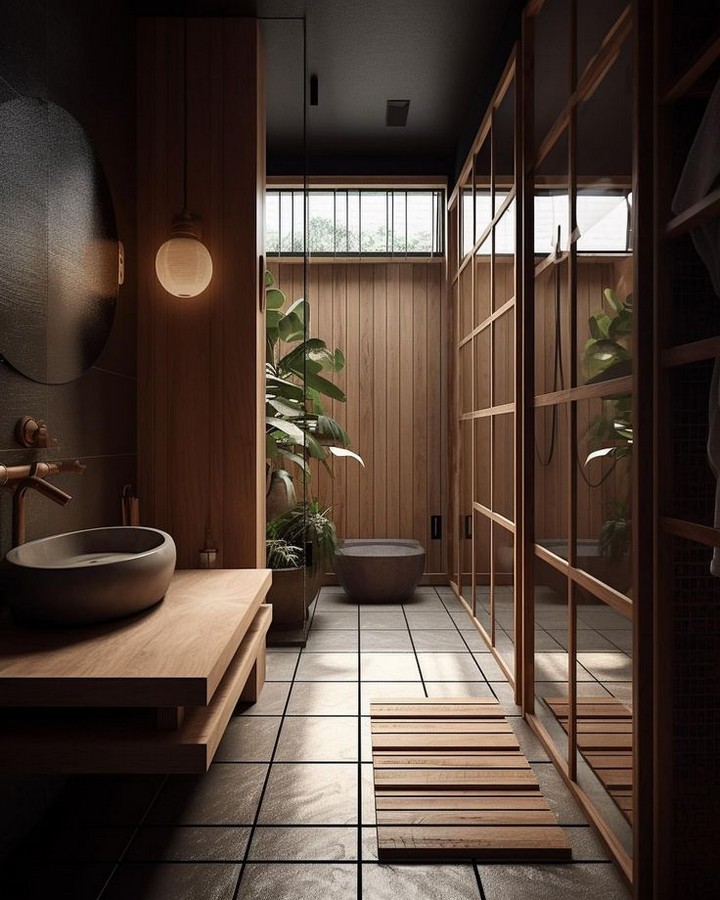
Traditional Japanese architecture features engawa covered exterior corridors that create transitional zones between inside and outside. Contemporary Japanese bathrooms often incorporate this concept with threshold spaces that serve as transitions between the bathroom and the rest of the home.
These might manifest as slim anteroom spaces with seating for removing shoes or slippers, partially enclosed dressing areas, or simply thoughtful material transitions that signal movement from one type of space to another. These transitions help users mentally shift from everyday concerns to the more contemplative bathing experience.
Even in renovations with limited square footage, this concept can be referenced through material changes or subtle level differences that create psychological rather than physical transitions small gestures that significantly enhance the bathing experience.
14. Borrowed Views (Shakkei)
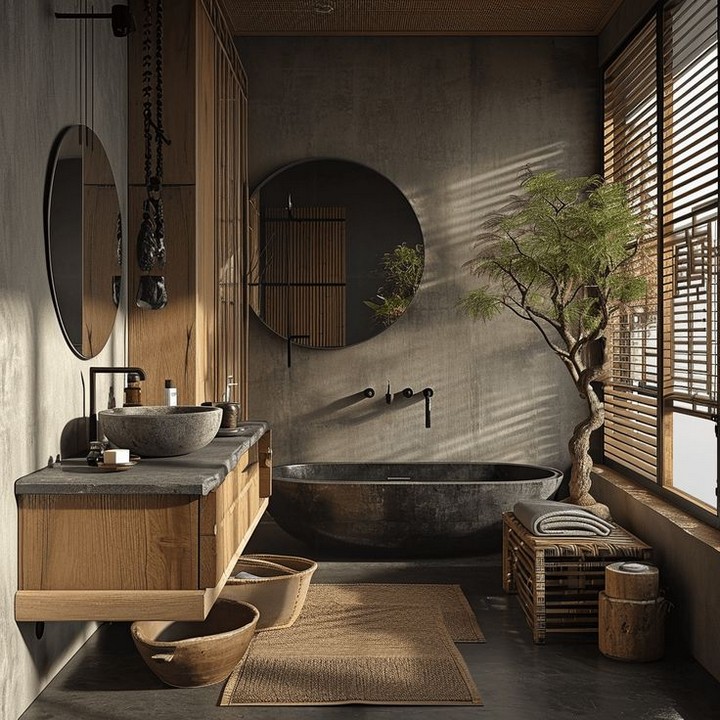
The Japanese garden design principle of shakkei “borrowed scenery” finds beautiful expression in contemporary bathroom design. Rather than fully enclosing bathrooms, Japanese design often creates carefully framed connections to exterior spaces, whether natural landscapes or small private gardens.
These visual connections might be created through strategically placed windows, glass panels that replace entire walls, or cleverly positioned mirrors that reflect outdoor elements. The resulting visual expansion makes bathrooms feel significantly more spacious while creating meditative focal points during bathing.
Even for bathrooms without direct garden access, this principle can be applied through created views perhaps a small interior courtyard, a living green wall, or even a single, perfectly positioned plant that creates a microcosm of nature within the bathroom environment.
15. Tokonoma-Inspired Display Niches

Traditional Japanese homes feature tokonoma recessed alcoves for displaying seasonal art or ikebana arrangements. Contemporary bathrooms often incorporate this concept with thoughtfully proportioned niches for both functional storage and decorative display.
Unlike conventional bathroom shelving that tends toward uniform spacing and sizes, these Japanese-inspired niches are intentionally designed with varied proportions, often asymmetrically arranged to create visual interest. They might house practical items like folded towels alongside a single river stone or seasonal flower—blending function and aesthetic consideration.
These architectural elements add depth and interest to bathroom walls while providing purposeful storage that encourages thoughtful curation rather than accumulation—a subtle invitation to mindfulness in everyday actions.
16. Level Changes and Spatial Definition
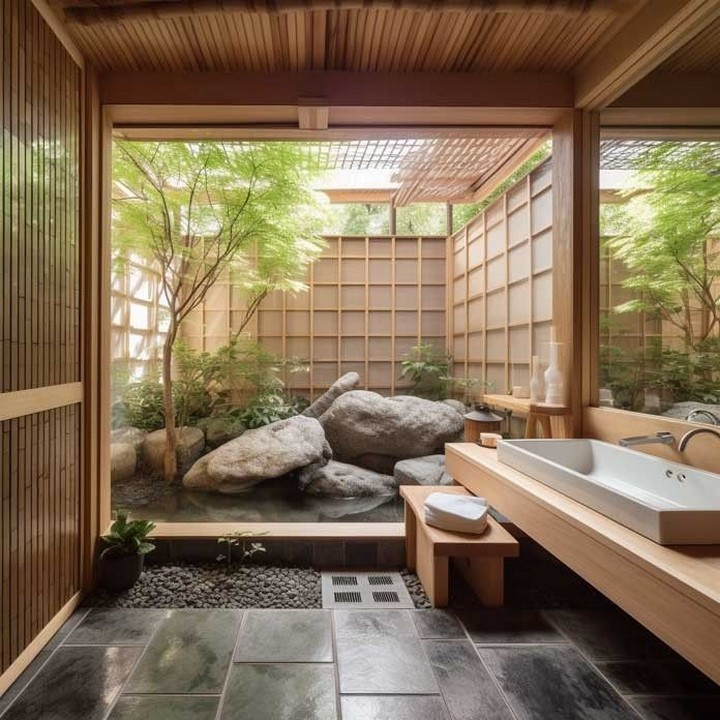
Traditional Japanese interiors often use subtle level changes to define different functional zones without requiring walls or partitions. Contemporary bathrooms incorporate this principle to create natural transitions between washing, soaking, and changing areas.
These might appear as slight steps up to a soaking tub platform, a gentle slope differentiating shower and dry areas, or a raised threshold marking the transition into the bathroom proper. Unlike dramatic level changes that could create accessibility concerns, these subtle variations—often just a few centimeters—create psychological boundaries while maintaining physical continuity.
This approach proves particularly valuable in open-plan bathroom designs, where conventional Western solutions like shower curtains or glass doors would interrupt the visual flow and spacious feeling so central to Japanese aesthetic principles.
17. Skylight and Indirect Natural Light
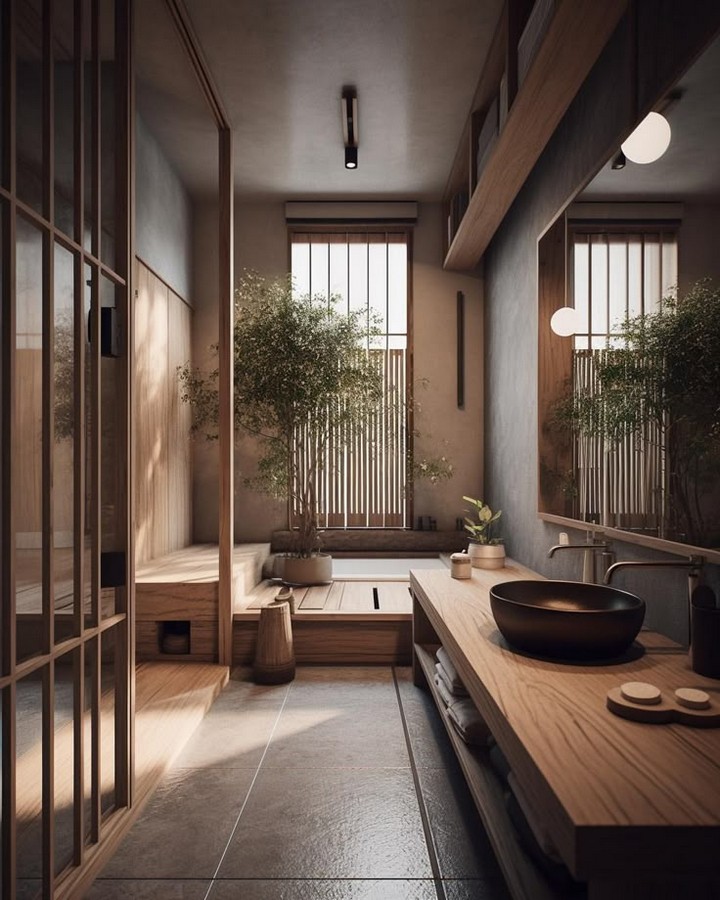
Natural illumination plays a crucial role in Japanese bathroom design, with particular emphasis on overhead and indirect light sources that create gentle, diffused illumination. Contemporary designs often feature skylights, clerestory windows, or light wells that bring daylight into the space without compromising privacy.
Unlike direct sunlight that creates harsh shadows and glare, these indirect light sources produce soft, even illumination that subtly changes throughout the day, connecting the bathroom experience to natural rhythms and external conditions. When artificial lighting is necessary, it typically references these natural qualities rather than creating uniform brightness.
This thoughtful approach to light transforms the bathroom from a purely functional space to one that responds to and reflects the world beyond its walls—a subtle reminder of nature’s presence even in the most interior spaces.
Material Innovations: Traditional Inspirations, Contemporary Applications
18. Hinoki Wood and Modern Alternatives
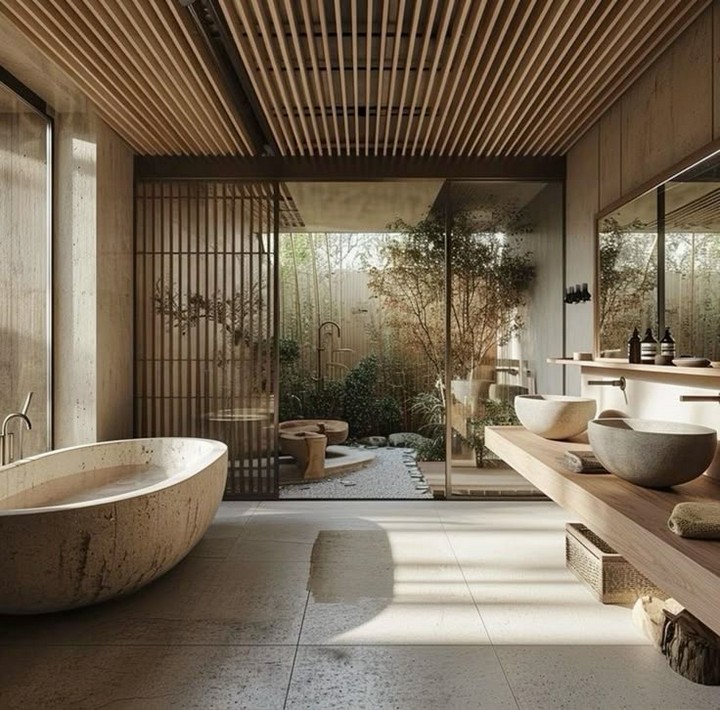
Hinoki cypress with its distinctive lemony fragrance, natural water resistance, and beautiful aging process—has been the traditional material of choice for Japanese bathhouses for centuries. Contemporary designs often incorporate hinoki elements, whether as soaking tubs, flooring, or accent features.
For applications where authentic hinoki proves impractical due to cost or maintenance concerns, modern alternatives include other aromatic woods with natural water resistance (like cedar or teak), composite materials that reference hinoki’s visual qualities, or even porcelain tiles with wood-grain finishes specifically developed to withstand bathroom conditions.
These materials honor the sensory richness of traditional bathrooms while addressing contemporary concerns about durability, maintenance, and sustainability—creating spaces that reference history without being bound by historical limitations.
19. Washi Paper Applications

Traditional Japanese interiors make extensive use of washi handmade paper with distinctive texture and translucency. While conventional paper isn’t suitable for wet environments, contemporary Japanese bathrooms incorporate washi-inspired elements through modern materials that reference its qualities.
These might include translucent resin panels with embedded fibers reminiscent of washi texture, specialized water-resistant papers laminated between glass for lighting fixtures or decorative elements, or wall coverings that mimic washi’s characteristic surface variations in waterproof materials.
These elements bring visual warmth and textural subtlety to spaces that might otherwise feel cold or clinical, softening the hard surfaces necessarily predominant in wet environments while connecting to Japanese material traditions.
20. River Stone Integration
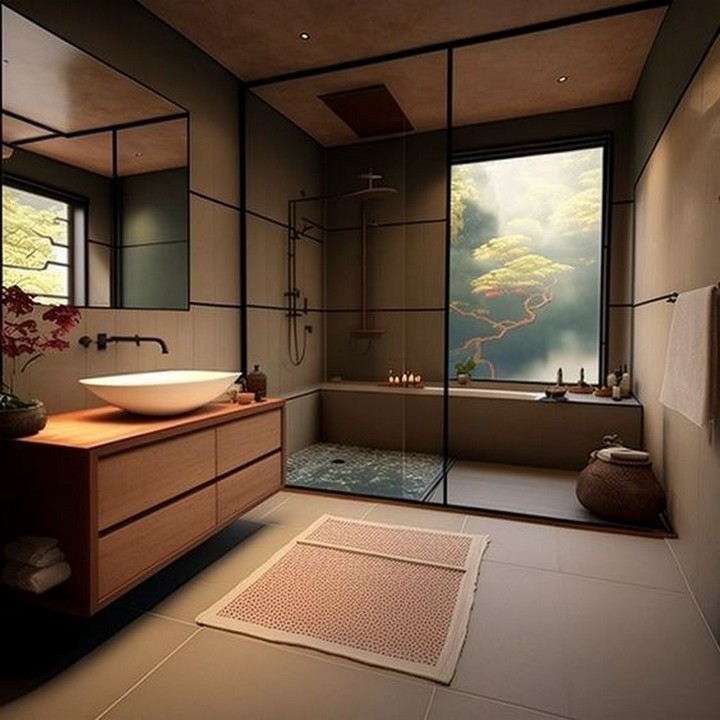
Smooth river stones worn by water over decades or centuries—feature prominently in Japanese bath culture, traditionally used as floor surfaces in washing areas or decorative elements in bathhouses. Contemporary designs incorporate these elements in both traditional and innovative ways.
Applications range from literal uses like pebble floor inserts that massage feet during washing to more interpretive approaches like cast concrete surfaces with embedded stones or textured porcelain tiles that reference river stone formations. These elements create connections to nature while providing practical benefits like slip resistance and textural interest.
The inherent variety in natural stone with each piece unique in shape, color, and texture brings subtle complexity to minimalist spaces, creating bathrooms that feel both designed and organic simultaneously.
21. Modern Bamboo Applications

Bamboo with its remarkable strength, sustainability, and cultural significance in Japanese design finds numerous applications in contemporary bathrooms. Beyond traditional uses like stools and washing buckets, innovative approaches include engineered bamboo flooring designed for wet environments, bamboo-based composites for countertops or basin surfaces, and even bamboo charcoal-infused materials that naturally absorb moisture and odors.
These applications maintain connections to traditional Japanese material choices while addressing contemporary concerns about sustainability, performance, and longevity. The distinctive jointed pattern and warm coloration of bamboo brings natural character to bathroom spaces while its rapid renewability satisfies ecological considerations.
This marriage of traditional material knowledge with contemporary technology exemplifies how Japanese bathroom design continues to evolve while maintaining its core aesthetic and philosophical principles.
22. Tadelakt and Clay Plaster Finishes
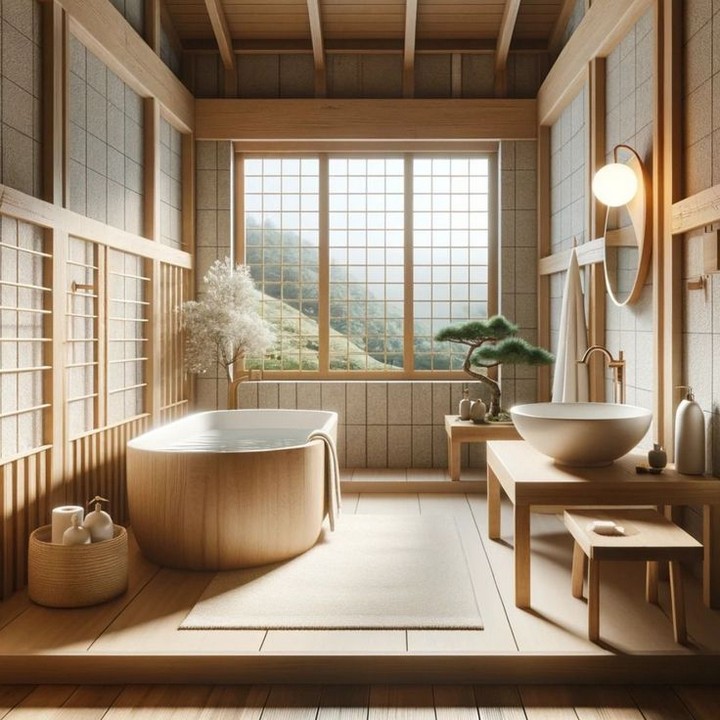
Traditional Japanese plastering techniques using natural clay with rice straw or other organic fibers create wall surfaces with subtle depth and texture. Contemporary bathrooms reference these traditions through modern applications of similar materials, including Japanese-inspired tadelakt plaster (a waterproof lime plaster originating in Morocco) and refined clay plasters specifically formulated for wet environments.
These finishes create subtly variable surfaces that interact beautifully with both natural and artificial light, revealing different qualities as illumination changes throughout the day. Unlike flat paint or consistent tile surfaces, these plasters have a living quality that adds depth without requiring pattern or color variation.
In practical terms, many of these finishes offer natural benefits including humidity regulation, mold resistance, and improved acoustics—aligning traditional aesthetics with contemporary performance requirements.
Technological Integration: Modern Function with Traditional Spirit
23. Smart Toilet Technology with Minimalist Design
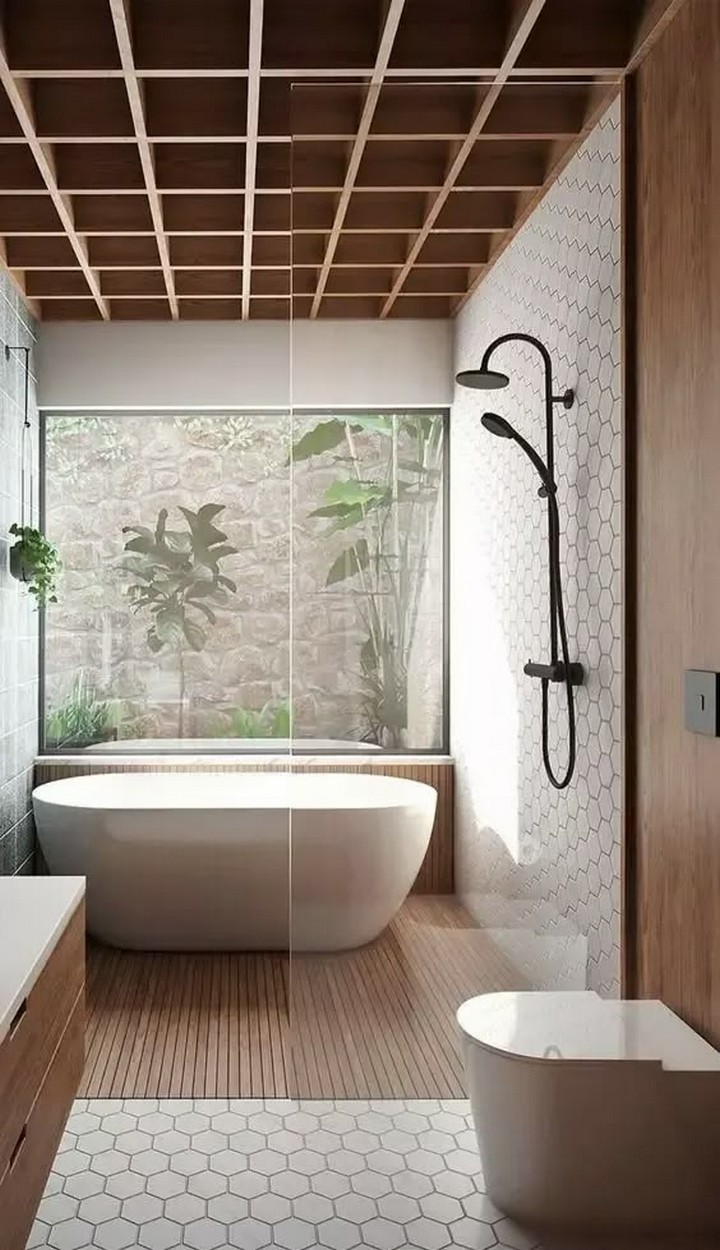
Japan leads the world in advanced toilet technology, combining sophisticated function with restrained aesthetics. Contemporary Japanese bathrooms often feature toilets with integrated bidet functions, automatic lids, heated seats, and personalized settings all contained within minimalist forms that don’t draw unnecessary attention.
Unlike some Western approaches that emphasize the visibility of technology, Japanese design typically conceals sophisticated functions within simple, clean-lined forms. Controls are discrete, mechanisms are hidden, and the overall impression remains one of simplicity despite the advanced functionality.
This thoughtful integration allows contemporary bathrooms to incorporate modern conveniences while maintaining the serene, uncluttered aesthetic central to Japanese design philosophy a reminder that sophistication often manifests as simplicity rather than complexity.
24. Precision Temperature Control Systems
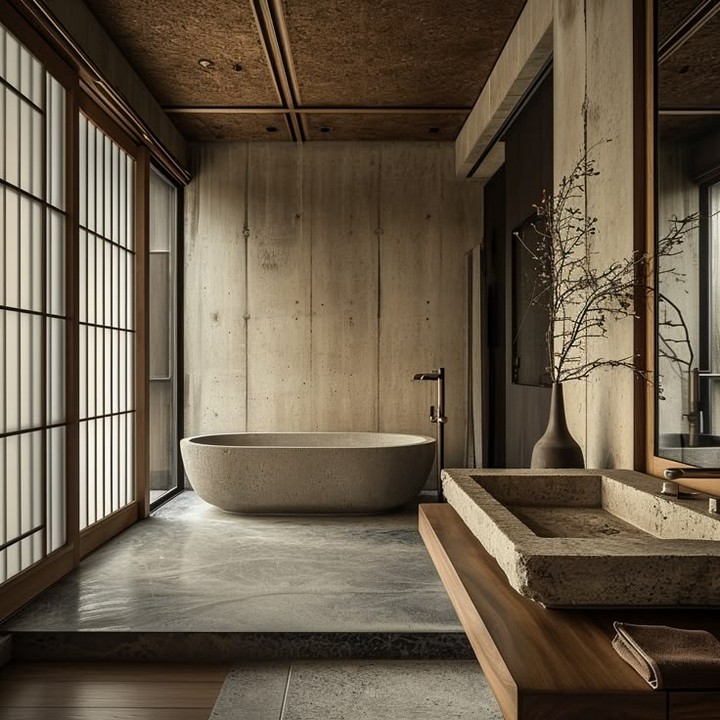
Traditional Japanese bathing culture places great importance on proper water temperature hot enough for therapeutic benefit but not so hot as to be uncomfortable. Contemporary designs incorporate sophisticated temperature control systems that maintain ideal soaking temperatures with minimal user intervention.
These might include digital thermostatic controls, circulation systems that ensure consistent temperature throughout the bath, or even programmable functions that prepare the bath to personal specifications at scheduled times. Unlike industrial-looking controls that would disrupt the aesthetic harmony, these systems are typically integrated into subtle control panels or even smartphone applications.
This technological support enhances the meditative quality of Japanese bathing by eliminating the need to monitor or adjust temperatures, allowing bathers to focus entirely on the restorative experience rather than its mechanical requirements.
25. Integrated Ventilation and Climate Control

Humidity management presents significant challenges in bathroom design. Contemporary Japanese bathrooms often feature sophisticated ventilation systems that maintain ideal conditions without creating the disruptive noise or obvious mechanical presence typical of Western exhaust fans.
These might include perimeter extraction systems concealed within architectural details, programmable climate control that responds to changing conditions, or passive design features that work with natural air movement patterns. The result is bathrooms that feel comfortable and properly ventilated without obvious mechanical intervention.
This thoughtful approach to environmental control reflects the Japanese principle of working with natural forces rather than imposing technological solutions—creating harmony between traditional wisdom and contemporary capabilities.
26. Touchless Fixtures with Traditional Forms

The Japanese cultural emphasis on cleanliness finds contemporary expression in touchless bathroom fixtures that eliminate potential contamination points. Unlike utilitarian Western approaches, Japanese design integrates these technologies within forms that reference traditional aesthetics.
These might include wall-mounted faucets with motion sensors concealed within forms reminiscent of bamboo spouts, automatically filling tubs controlled by subtle touch panels with traditional proportions, or lighting that responds to presence without requiring direct contact with switches or controls.
This seamless integration of convenience technology with traditional design sensibilities creates bathrooms that feel both timeless and contemporary—spaces that honor historical practices while acknowledging modern life’s realities.
Philosophical Elements: Designing with Deeper Meaning
27. Ma: The Beauty of Negative Space
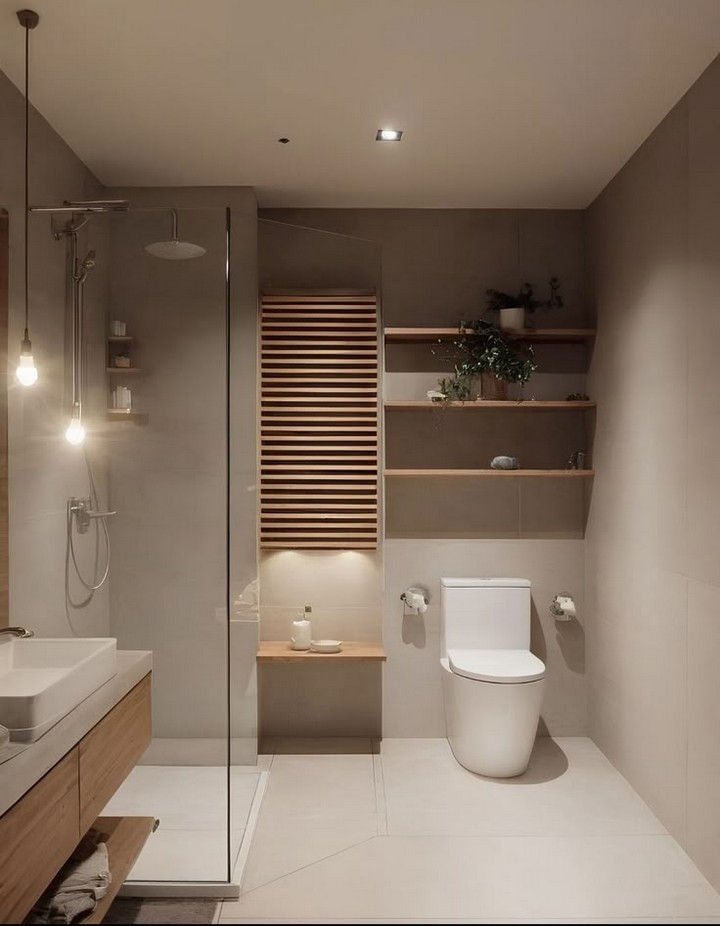
Perhaps the most profound contribution of Japanese design philosophy to bathroom creation is the concept of ma the conscious appreciation of negative space as an active element rather than empty absence. Contemporary Japanese bathrooms embody this principle through thoughtful restraint, allowing each element room to breathe rather than filling every available surface.
In practical application, this might mean allowing a beautiful material to occupy an entire wall without interruption, positioning fixtures with generous spacing between them, or designating certain areas to remain completely empty save for the play of light and shadow. These intentional “pauses” create bathrooms that feel spacious and contemplative regardless of their actual dimensions.
This approach offers a powerful antidote to the Western tendency toward maximizing storage and functionality at the expense of spatial quality a reminder that what we choose not to include can be as important as what we do include.
28. Wabi-Sabi: Embracing Imperfection and Transience
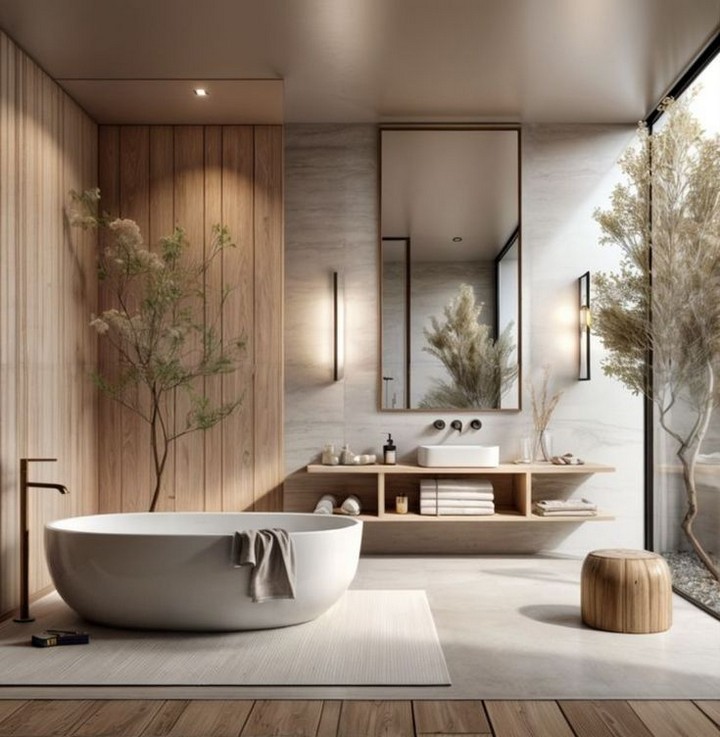
The Japanese aesthetic principle of wabi-sabi finding beauty in imperfection, impermanence, and incompleteness offers profound guidance for contemporary bathroom design. Rather than pursuing flawless surfaces and permanent perfection, this approach celebrates materials that reveal their natural characteristics, change over time, and bear witness to their use.
In bathroom applications, this might manifest as copper fixtures allowed to develop natural patina, stone elements with visible veining or natural variations, wood surfaces that gradually silver with exposure to water, or concrete elements that reveal subtle inconsistencies from the casting process. These “imperfections” create spaces with soul and character that deepen with time rather than deteriorate.
This philosophical stance offers liberation from the exhausting pursuit of perfection and permanence, inviting instead a mindful appreciation of natural processes and the beauty of authentic aging a particularly valuable perspective in spaces dedicated to personal care and renewal.
Beyond Trends to Timeless Design

Japanese bathroom design offers far more than aesthetic inspiration it presents a fundamentally different way of conceiving these essential spaces. By focusing on the experience rather than just the appearance, on ritual rather than just routine, these design principles create bathrooms that nourish both body and spirit.
What makes these 28 elements particularly valuable is their adaptability across different architectural contexts, budgets, and personal preferences. Whether incorporated comprehensively in a full bathroom renovation or selectively as part of smaller improvements, these Japanese-inspired approaches can significantly enhance how we experience one of our most intimate daily environments.
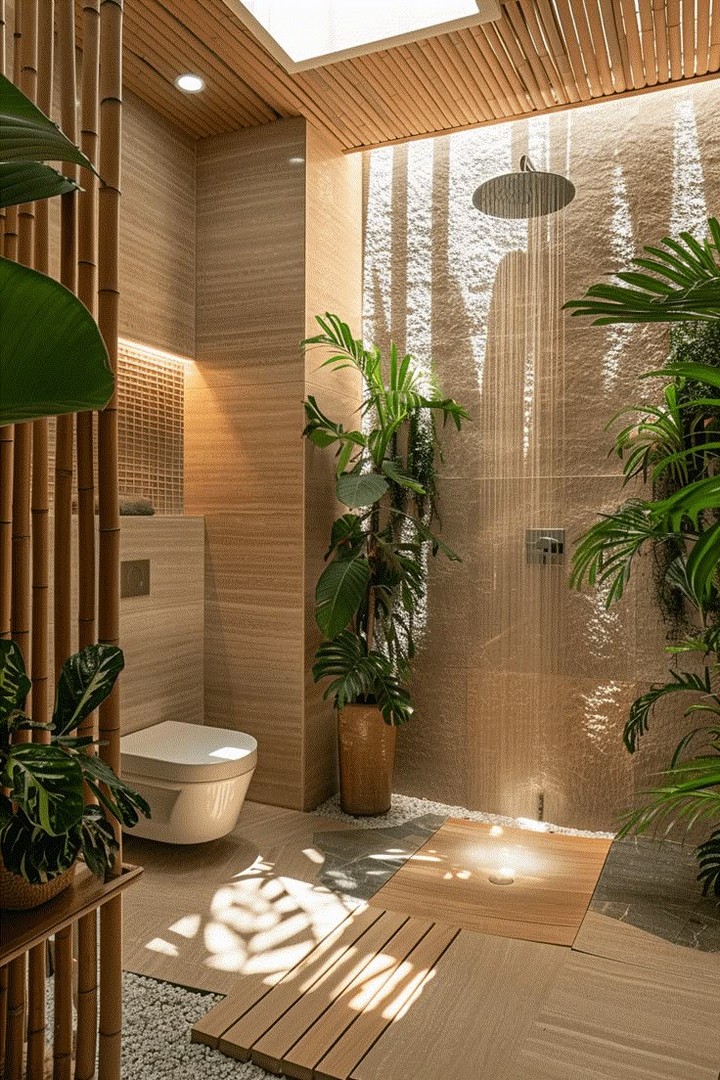
As we increasingly seek homes that support wellbeing and mindfulness, the centuries-old wisdom of Japanese bathroom design offers perfectly timed guidance—reminding us that true luxury lies not in extravagance or excess, but in thoughtful details, natural materials, and spaces that encourage us to slow down and fully inhabit the present moment.
Have you incorporated elements of Japanese bathroom design in your home? Which of these 28 approaches resonates most strongly with your needs and aesthetic preferences? We’d love to see your Japanese-inspired bathroom projects and hear about how these design principles have transformed your daily rituals. Share your experiences in the comments below, or tag us in your bathroom transformation photos on social media!

